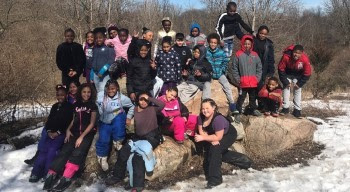Michigan DNR staff produces award-winning guide to school forests

Whether they consist of a couple acres in a suburb or hundreds of acres in a rural area, school forests are a perfect setting for hands-on learning about plants, trees, wildlife and how ecosystems work.
The Michigan School Forest Guide offers plenty of advice on school forests, from how to set one up, how to make the most of an existing school forest and even how to introduce students to public forests if a school forest isn’t available. It has been awarded the Thomas Say Award for Outstanding Publication by the National Association for Interpretation.
Who was Thomas Say, by the way? He was an early 19th-century naturalist who identified more than 1,500 insects and wildlife species native to North America. The awards program honors naturalists whose work inspires greater understanding, awareness and stewardship of natural resources.
“Once, there were more than 600 school forests in Michigan,” said Ada Takacs, DNR department specialist, who created the guide along with DNR staffer Mike Smalligan, AmeriCorps volunteers Rachel Straughen and Angel Squalls, and naturalist Maureen Stine. “If your school has a forest, that’s a plus. If your school doesn’t have a forest, there are still ways to get kids into this rich learning environment.”
Want a forest for your own school? A PDF copy of the guide is available
at the Project Learning Tree website. The guide includes tools needed to “grow” a school forest, from the legal aspects of creating one to learning to manage the forest. Creation of the guide was funded by a U.S. Forest Service Landscape Scale Restoration Grant.
Questions? Contact Ada Takacs at 231-534-5569 or Mike Smalligan at 517-449-5666.





